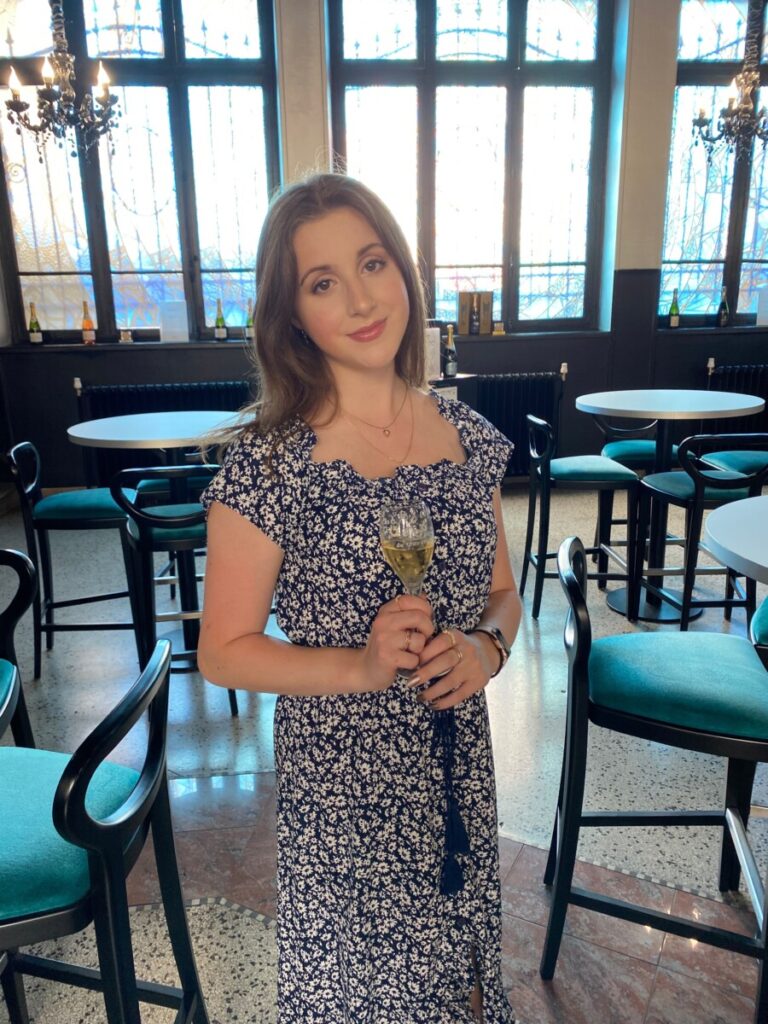Last Saturday, Lauren, Sam, Rachel, another friend, and I woke up early to venture out into the countryside of France. We took a 45 minute high speed train to Reims, the city known as the unofficial capital of the Champagne wine-growing region. Many champagne houses are headquartered here, and offer tastings and cellar tours. Reims is also home to the Cathédrale Notre-Dame de Reims, a beautifully grand cathedral filled with stained-glass windows and Gothic carved portals, and has been where French kings were crowned for over 1000 years. Throughout our day of (many) champagne tastings, we tried to hone our skills and refine our palates in order to appreciate all the layers of the wines we were tasting.
Our servers commonly related the flavors of each wine with a different food. “The chardonnay offers a freshness of green apple at the beginning, and the ending flavor from the pinot noir is fruity like strawberry”. It made me wonder how in fact the intricacies of the combined biomechanics and brain mechanisms responsible for the taste come together to help us achieve the tasting of various flavors in wine. Believe it or not, there is an interdisciplinary field known as neuroenology that looks into just that.

A 2015 article by Shepherd details how this discipline investigates the contributions that science make to the enhanced quality and appreciation of wine. Many are quick to cite taste buds as the sole proprietors of flavor, however the olfactory system also plays an essential role. Olfaction begins when odorant molecules enter the nasal cavity via inhalation through the nose, or rising through the mouth from food or drink. These molecules then are able to bind to various receptors that send signals to the olfactory bulb, which activates other cascades of neural signals responsible for smell recognition, memory, and emotion (Shepard, 2015). When sniffing a glass of wine, the aromatic compounds released from the wine activate the olfactory system in a similar manner to flavor and scents previously encountered in life. In our wine tasting, we were instructed to pull a bit of air through our lips while the wine is in our mouth to aerate the wine. This further releases aromatic molecules from the wine.
Unfortunately, I cannot say we mastered the art of wine tasting by the end of the day, but the experience was truly enjoyed, nonetheless. Perhaps it is time to take up some studies on neuroenology.

Reference:
Shepherd, G. M. (2016). Neuroenology: how the brain creates the taste of wine. Columbia University Press.
